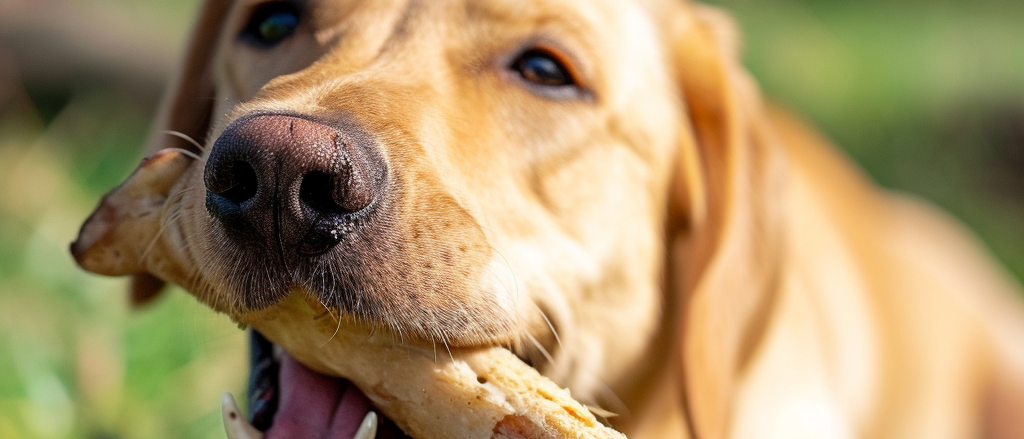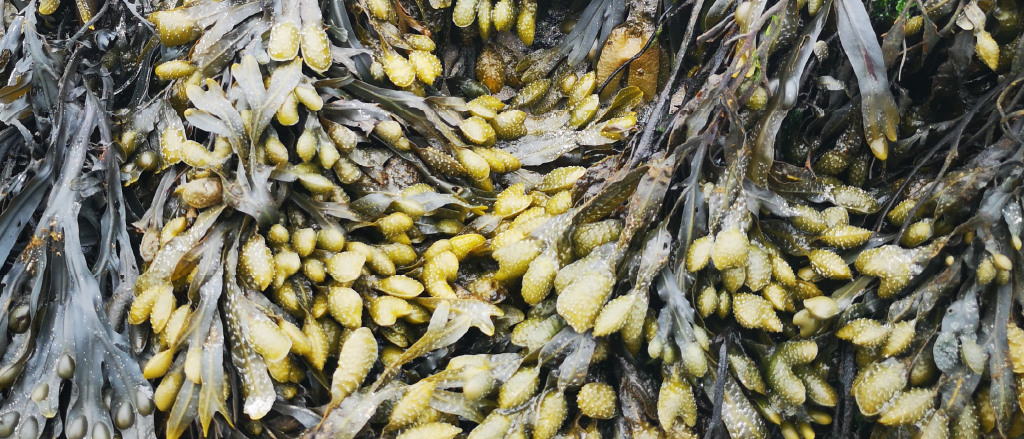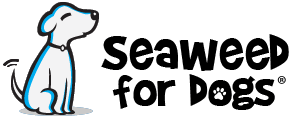Tooth Cleaning Products For Dogs - Easy Home Teeth Cleaning Tips
Share

9 out of 10 dogs have gum disease by three years of age and 9 out of 10 dogs are dry fed. And we’re supposed to believe it’s nothing to do with diet?! Of course it is, as it is with us. Eat right and brush, that’s what they tell us. Here we take at the different options to help keep your dogs teeth clean with a bit of abrasive action.
Dog’s lack active amylase in their saliva which means, unlike us, they cannot digest and clear carbohydrates (sugar) from their mouth’s properly. This enables it to remain in the mouth fuelling bacterial growth. Dry fed dogs today are eating 50% carbs which is essentially 50% sugar. Couple this with the fact that their new pebble-like diet offers no abrasion or chewing action to the dog. Their teeth never get a brushing. We know chewing cleans their teeth. In one study, increasing the diameter of kibble by 50% led to a 42% reduction in tartar.
The dog is a carnivore, best for his teeth you feed him like one. They do not require carbs in their diet. If you cut cereal based dry food and terrible dog treats such as dental sticks (first ingredients carbs, third ingredient sugar!!) out you will cut plaque growth out.
So that you have the diet right, the teeth need a bushing. Here’s some ideas that can do it! They’re in no particular order after the first.
FEED RAW MEATY BONES (RMB’S)
RMB’s are a vital part of a dog’s diet for three reasons. The first is that they offer abrasion to the dog’s dental arcade. The nipping and gnawing and chewing of the meat and bone rub the teeth and gums, keeping them clean and strong. RMB’s also offer vital fresh nutrition for the dog. They provide all the natural and absorbable calcium your dog needs (calcium supplements and the burnt bone ash used in dry food are extremely poor alternatives to fresh calcium). Fresh calcium will fuel stronger teeth and bones in your dog. Bones also provide a whole host of rarer elements such as zinc (also vital for teeth, skin and hair), magnesium, copper, selenium, you name it. This is where scavenging carnivores get these bits and pieces. Finally RMB’s offer some roughage to the diet, giving the back passage a bit of a work out, clearing out debris and some potential baddies that might be hanging around in there.
Vets are terrified of bones as they do not learn about them in college (as they contain fresh meat and we can’t be talking about the benefits of fresh meat and bone in a college sponsored by a dry food company) and they DO encounter some bone issues in dogs. However these are invariably dry fed dogs with cooked bones. Most important is that the bones are fed raw / fresh, never cooked. If you heat the bone above 70 degrees you melt the collagen (the springy cartilage stuff) out of the bone, leaving behind a hard brittle mass. These are the bones that get stuck in your dogs intestines. So please do not buy cooked / desiccated bones in pet shops.
Also, dry fed dogs have stomach acids of around pH2.5 (the same as omnivorous humans as this acidity works best for a high cereal diet). However raw fed dogs have a more natural pH1.5 which is actually ten times lower than a dry fed dog. This means a raw fed dogs has a much higher processing power. Bones are shown to take longer to digest in the stomach acids of dry fed dogs.
Feeding RMB’s twice a week is enough to stop plaque building up. Take away old, dry bones. Simply give them a few hours having a good old chew, then distract them and remove while it’s still fresh. Old dry bones could cause problems.

NON-FOOD CHEWS
For those in apartments or still a bit worried about having their pal chomping down on a raw pork femur, there are a few toys that might offer a little abrasion to the diet. Antlers are one. The problem is that unlike RMB’s antlers are so hard that it does not get between the teeth. Nor do they offer much abrasion to the canines or incisors at the front, as they are not used in the antler-chewing process. People believe that the extra saliva will help. Perhaps it does.
Nylabones, or any very hard plastic toys that look like bones, are as hard as bones if not harder (but vitally are not bones!) and have the same problems as antlers but now your dog is swallowing small bits of plastic. Worse still are the plastic bones that have beef or chicken flavoured plastic! The flavouring here is MSM (Mono Sodium Glutamate) and in some of these toys there is a heart-stopping MSM content of 30%. No wonder they keep chewing it. Please do not feed flavoured plastic toys.
Knotted-rope toys are great, if your dog likes them. They can nip at, tear at and chew them. The very odd time you may find a few threads in their poo, but this is no big deal. These toys get soggy but as his saliva is antibacterial don’t worry too much about the baddies living on it. There are a number of other “dental” type toys on the market with each helping a little and, of course, they’re fun!

DENTAL TYPE STICKS AND EDIBLE CHEWS
Dental sticks are made of wheat gluten. It gives them their springy roughness. However wheat gluten is highly antigenic to dogs. Their third ingredient is sugar and the fourth is salt (so the dog’s will actually eat it). We strongly advise against feeding these to dogs. There are vegetable based varieties available in pet shops. They seem pretty good, certainly better than the wheat gluten-based ones, and The Veterinary Oral Health Council recommends them. The VOHC is an organization that evaluates pet products to see if they meet standards for reducing plaque or tartar. Approved foods, treats, and chews must reduce plaque or tartar by at least 10% to achieve the VOHC seal of approval. It’s not great in the greater scheme of things. And they recommend dental sticks made from wheat gluten with third ingredient sugar and fourth ingredient salt (so the dog will eat it), soooo……
Raw hide chews are made from the skin of a cow. Studies tentatively suggest that they reduce plaque build up in dogs. Just remember they’re pure fat, it’s like giving a Mars bar to him each day. They love them of course, just take it easy! BICARBONATE SODA WHITENS TEETH
Use a teaspoon of bicarbonate soda with some fresh lemon juice and make a paste. Dip a toothbrush in it and brush his teeth. The taste isn’t pleasant. Maybe try in your own mouth first. You can also use bicarbonate soda and water. It’s less effective but will still work. Or you can simply add some bicarbonate soda to some dog toothpaste which is probably meat flavoured!
If it’s not it should be!
Take a picture of a problem area before you start. Use twice a week for a month and then take another picture of the problem area to see if there is any changes.
SEAWEED
 Certain brown seaweeds have an amazing ability to keep teeth clean, this is due to the anti-microbial properties in them. They can also help reduce gingival inflammation due to the anti-inflammatory properties. Certain brown seaweeds can have an amazing effect keeping a dogs mouth healthy.
Certain brown seaweeds have an amazing ability to keep teeth clean, this is due to the anti-microbial properties in them. They can also help reduce gingival inflammation due to the anti-inflammatory properties. Certain brown seaweeds can have an amazing effect keeping a dogs mouth healthy.























